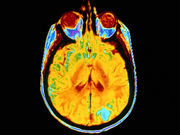Elevated levels of plasma HC/HCTL contribute to Alzheimer’s pathology via Aβ-fibrinogen interaction
MONDAY, April 25, 2016 (HealthDay News) — Plasma homocysteine (HC) and its metabolite homocysteine thiolactone (HCTL) contribute to Alzheimer’s disease (AD) pathology via the amyloid-β (Aβ)-fibrinogen interaction, according to a study published online April 19 in the Journal of Thrombosis and Haemostasis.
Young Cheul Chung, from Rockefeller University in New York City, and colleagues examined the specific role of elevated homocysteine levels in AD pathophysiology. Immunohistochemistry, cerebral amyloid angiopathy (CAA), fibrinogen deposition, and their correlation to each other were examined in the brains of AD patients with and without hyperhomocysteinemia (HHC). An AD mouse model was administered a high methionine diet for several months to study AD-HCC comorbidity in detail.
In AD patients with HHC, the researchers identified increased fibrinogen levels and amyloid-β (Aβ) deposits in the blood vessels and brain parenchyma. HC and HCTL were found to enhance the interaction between fibrinogen and Aβ, promote tighter fibrin clot formation, and delay fibrinolysis of clots. In an AD mouse model, diet-induced HHC led to severe CAA and parenchymal Aβ deposition, and to significant impairments in learning and memory.
“These findings suggest that elevated levels of plasma HC/HCTL contribute to AD pathology via the Aβ-fibrinogen interaction,” the authors write.
Copyright © 2016 HealthDay. All rights reserved.








